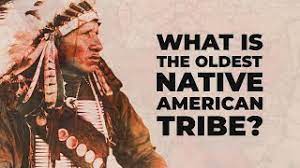-
Best Australian Pokies Best Payout
Play Free 777 Pokies Online
What Are the Best Australian Pokies to Win Big On
What Are the Best Online Pokies with Low Minimum Deposits for Real Money in Australia
New Australian Pokies Accepting PayID
What Are the Best Strategies to Win in Online Pokies with Bonus Rounds in Australia
Tips for Winning Top Australian Pokies
What Online Casinos Offer Free Play Pokies with Welcome Bonuses in Australia
Australian Slot Games
Payout Ratio Pokies with Welcome Bonus

Native Americans have lived and worked in Georgia for over 12,000 years. Two of the largest tribes are the Creek and the Cherokee. Also present were the Muscogee, the Chickasaw, the Timucua, the Apalachee, the Hitchiti, and the Guale, among others.
Native Americans have lived and worked in Georgia
Native Americans have lived and worked in Georgia for over 12,000 years. Two of the largest tribes are the Creek and the Cherokee. Also present were the Muscogee, the Chickasaw, the Timucua, the Apalachee, the Hitchiti, and the Guale, among others. Compare and contrast the history and cultures of all of these tribes.
What Native American tribes lived in Georgia?
- Apalachee.
- Apalachicola.
- Catawba.
- Chatot.
- Cherokee.
- Chiaha.
- Chickasaw.
- Chickasaw Indians Creek.
Thereof, what are the two largest Native American tribes in Georgia?
Native Americans have lived and worked in Georgia for over 12,000 years. Two of the largest tribes are the Creek and the Cherokee.
Also Know, what Native American tribes lived in Atlanta? Georgia Indian Tribes
- Apalachee Indians. After the English and Creeks destroyed the Apalachee towns in Florida in 1704, they established a part of the tribe in a village not far below the present Augusta.
- Apalachicola Indians.
- Chatot Indians.
- Cherokee Indians.
- Chiaha Indians.
- Chickasaw Indians.
- Creek Indians.
- Guale Indians.
Considering this, what Native Americans lived in Georgia?
The names of the Georgia tribes included the Apalachee, Choctaw, Cherokee, Hitchiti, Oconee, Miccosukee, Muskogee Creek, Timucua, Yamasee, Guale, Shawnee and the Yuchi.
Where did the Cherokee live in Georgia?
The Georgia Cherokee’s primary area of residence is in North Georgia, north of the Chattahoochee River, which comprises the original area occupied by their Cherokee ancestors prior to the forced removal of many of their kinsmen in 1838, known as the infamous Trail of Tears.
Are there Native American reservations in Georgia?
How many Native Americans live in Georgia?
Who lived in Georgia before European settlers?
How many Choctaws are there today?
What was the oldest prehistoric civilization found in Georgia?
What Indian tribes lived in Florida?
- Ais.
- Apalachee.
- Calusa.
- Creek.
- Miccosukee.
- Seminole.
- Timucua.
- Yemassee.
Who were the first inhabitants of Georgia?
What was Georgia’s relationship with the natives?
What does paleoindian mean?
What American native group did Europeans encounter when they arrived in Georgia?
Attachments
